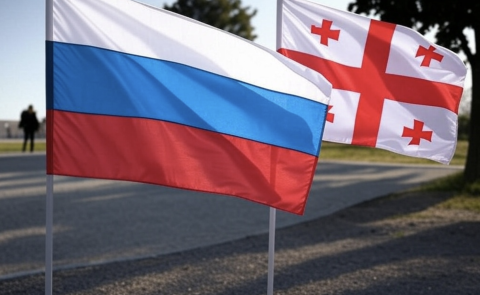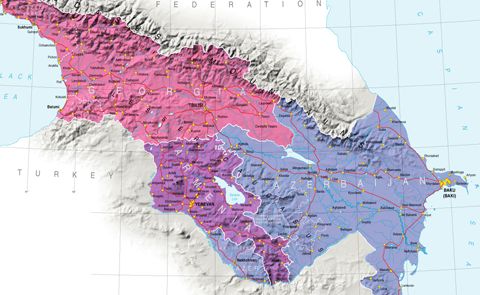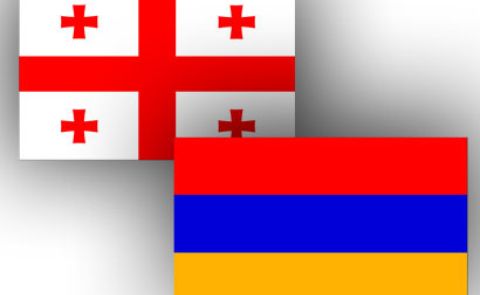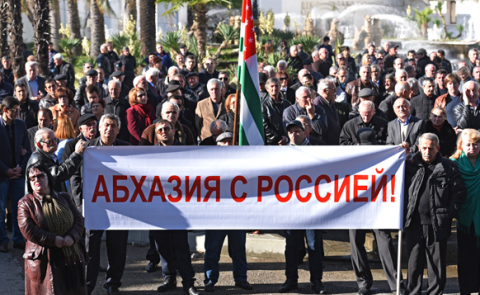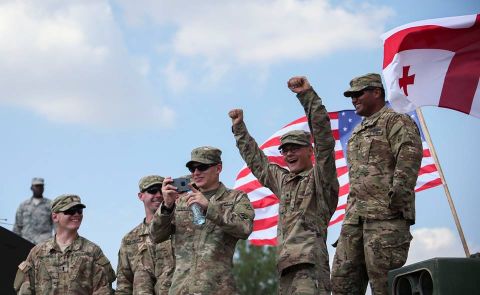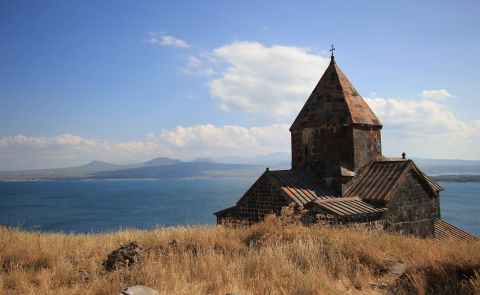
Why Vardanyan ran out of time
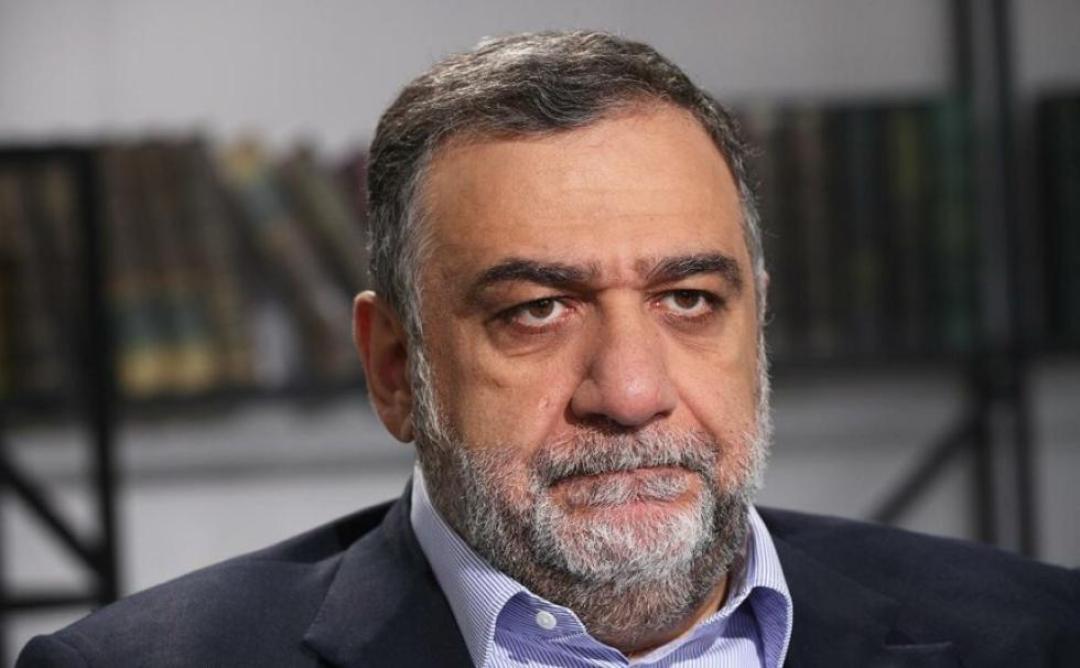
About author: Ilya Roubanis, PhD (EUI, Florence) is an Area Studies expert specialising in the South Caucasus and Central Asia
General audiences do not often turn their heads to the Caucasus, especially as Ukraine tends to fill this international news slot in mainstream media coverage. There are some exceptions. Armenia has a large and politically active diaspora, and the conflict in Nagorno-Karabakh will attract motivated attention, particularly on the US West Coast and in France. Attention may have been heightened for a few weeks due to the intriguing figure of Ruben Vardanyan.
A loud man makes Karabakh a newsworthy story
You may not know the rulers of South Ossetia, Transnistria, Luhansk or Donetsk. But chances are you have met Ruben Vardanyan, an Armenian-born investment banker who built a global business empire from Moscow. His involvement in international education development, including the UWC movement, his involvement in Armenian diaspora politics, his famous Hollywood friends, and the fact that he is a "Russian billionaire" is a powerful combination that attracts media attention. If you live in a part of the world whose capital, Stepanakert, is not very well known, Vardanyan's arrival in local politics can literally put you on the map. And that matters when you are facing an existential crisis.
Vardanyan's involvement in Nagorno-Karabakh politics does not follow an easily rationalised narrative. Unusually for businessmen who make it big in Russia, 'oligarchs', there is little evidence that he sought political office for security reasons. He owned his own media, he had his own resources, and no particular interest group can be attributed to him. In September 2022, Vardanyan renounced his Russian citizenship in order to gain the constitutional right to reside in the self-proclaimed Republic of Nagorno-Karabakh, a political entity legally incorporated into the sovereign territory of Azerbaijan. There, in November 2022, Vardanyan was appointed Minister of State of a political entity that is not recognised internationally, even by Armenia. Vardanyan did not come to office empty-handed. His political dowry was international media attention, which would come in handy.
On 12 December 2022, Azerbaijani protesters blocked the Lachin Corridor, a strip of land 70 kilometres long and five kilometres wide that connects the self-proclaimed Republic of Nagorno-Karabakh to Armenia. They were protesting against mining practices in the Armenian enclave, although the Armenian press is not convinced that the blockade is linked to environmental concerns. The Armenian-American journalist Eric Hacopian has described them as Azerbaijan's 'secret service assets', and the area studies specialist Thomas de Waal calls them Baku's version of 'little green men'. For the Armenians of Nagorno-Karabakh, the blockade has meant deteriorating public health conditions, disruptions to food and medicine supplies, power cuts, natural gas interruptions, business closures and school shutdowns. Azerbaijan will not formally address these concerns, as the self-proclaimed Republic of Karabakh is considered a breakaway republic rather than a legitimate counterpart, except for Ruben Vardanyan. Because of 'the oligarch', Karabakh was a newsworthy story, even for the BBC.
Vardanyan must go
After less than four months in office, on 23 February 2023, the president of the self-proclaimed Republic of Nagorno-Karabakh, Arayik Harutyunyan, dismissed Vardanyan, who remains in Stepanakert, but he's no longer the territory's official spokesman. The question, then, is why Vardanyan had to go and who made it happen. There are two broad narratives that explain the rise and fall of Ruben Vardanyan.
The first begins with the Munich Security Conference, where three South Caucasus leaders shared a panel with the OSCE Secretary General. There, President Aliyev of Azerbaijan made it clear that he was willing to engage with the Karabakh Armenians, but not with Ruben Vardanyan. About a week later, Vardanyan was sacked from his post. The Armenian opposition sees this as a failure on Yerevan's part, in line with a broader policy of appeasement, because, in effect, "the president asks, the president gets". This narrative sees Vardanyan's fall as part of an Armenian policy of appeasement.
A second account suggests that the decisive factor in Vardanyan's dismissal was not Yerevan but Moscow. In early January there were rumours that first Harutyunyan and then Vardanyan had travelled to Moscow, not together but one after the other. Two sources with intimate knowledge of diplomatic and national security developments on the ground suggest that Vardanyan was told that lifting the blockade required his departure. In short, President Aliyev did ask, but his question was addressed to Moscow.
Armenian journalists and diplomats will, of course, argue that the truth lies somewhere in the middle. Azerbaijan may have lobbied Moscow for Vardanyan's removal, but neither Yerevan nor Stepanakert put up much of a fight to keep him in place. For the government, Vardanyan is no longer Stepanakert's spokesman, he doesn't attract global attention, he doesn't challenge Azerbaijan's sovereignty and he doesn't create problems that Yerevan can really solve. The opposition in Armenia did not rally behind Vardanyan either, because it did not accept responsibility for the defeat in the Second Karabakh War and sat on the fence while the Pashinyan government alienated Russia or pursued what is called "appeasement". Vardanyan is neither with nor against anyone in Yerevan, so he has neither friends nor enemies. Sitting on the fence does not always work. Baku wanted Vardanyan to go. Azerbaijan no longer wants to deal with someone who has access to the global airwaves, which is inappropriate for a "domestic affair". Ultimately, Vardanyan's legacy was indicative of a wider process of polarisation in Armenian foreign policy.
The “corridor-for-corridor” policy
When the Lachin Corridor was blocked in December 2022, there was little to suggest that Russia would take assertive action. Russia's modest peacekeeping force consists of 1960 troops deployed at checkpoints along the line of contact between Azerbaijani forces and the ethnic Armenian population. Their mandate is based on Article 6 of the Russian-brokered November 2020 ceasefire agreement, which explicitly stipulates Russian control over the Lachin Corridor. Following the blockade, Baku made clear that Russian troops would stand in the middle but not in Baku's way of asserting sovereignty. The Russian resolve had been put to the test and found to be insufficient.
The Russian security vacuum is not only important in Nagorno-Karabakh. In July 2021, Azerbaijani President Ilham Aliyev formulated a territorial claim against southern Armenia. Referring to Article 9 of the November 2020 ceasefire treaty, it pointed out that Armenia must "guarantee the security of transport links between the western regions of the Republic of Azerbaijan and the Nakhchivan Autonomy Republic". What followed was the formulation of a diplomatic analogy between the Lachin Corridor and this transit route, which Baku went on to call the "Zangezur Corridor", articulating a claim to Armenia's Syunik region and claiming that "Western Zangezur" in Armenia was the extension of "Eastern Zangezur" in Azerbaijan. Three independent sources with intimate knowledge of the diplomatic and national security landscape in Armenia confirm that the Pashinyan government is focused on maintaining the status quo rather than a head-to-head standoff. The military balance limits all other options, especially as the Russians are no longer the region's security guarantors.
Yerevan does not want to have a loud conversation about Karabakh - not because it is an issue of secondary importance, but because this challenge has to be weighed up against a broader agenda. On 13 September 2022, Azerbaijani troops advanced to positions in southeastern Armenia, within reach of Kapan, Goris, Vardenis and Jermuk. At the time, Yerevan sought the intervention of the Collective Security Treaty Organisation (CSTO), whose Article 4 obliges member states to defend the sovereignty of each member. Calls for suspension of membership are now common in Armenia, although Russia still has strong sympathies among the opposition. But the idea of Russia as an older brother has eroded.
Yerevan needs time: to see whether the Russian position will change depending on what happens in Ukraine; to build up its deterrence posture; to create a situation of less crushing asymmetry; to extend its multi-vector policy to Stepanakert, if at all possible. As a senior Armenian diplomat told me, anyone sitting in Yerevan has to weigh up the situation in Karabakh. This dilemma is not saving Stepanakert. An adviser to the president of the self-proclaimed Republic of Nagorno-Karabakh, Arayik Harutyunyan, told me that Azerbaijan is pursuing a 'corridor for corridor' agenda.
Indeed, the Azerbaijani argument is that the Lachin Corridor should be the normative yardstick for the so-called Zangezur Corridor: no customs checks in Lachin should mean no customs checks in the Armenian south; Armenian customs checks along the Armenian south should mean Azerbaijani checkpoints along the Lachin Corridor. "It is our right," said President Aliyev, because "this is our territory, recognised by the international community". And so time became a finite commodity in the Armenian-Azerbaijani standoff.
Vardanyan runs the clock
From Yerevan's perspective, Vardanyan's assertion of the sovereignty of the self-proclaimed Republic of Nagorno-Karabakh has provoked Baku, attracting welcome attention but also setting the stage for a standoff that Armenia lacks the military means to resolve. Yerevan has set up mechanisms to maintain the status quo, however precarious, in southern Armenia. An EU mission has been in place since October 2022, and its mandate was renewed for two years in February 2023. In the words of an Armenian diplomat, "as long as EU observers are deployed, shelling and full-scale mobilisation will be impractical" {for Azerbaijan}. Azerbaijani sources suggest that neither Baku nor Moscow is entirely satisfied with the EU mission, and that as long as one is there, so will the other. So Armenia is stopping the clock.
Yerevan secured some additional support from Iran, which opened a consulate in Kapan, southern Armenia, reaffirming Tehran's determination not to allow Azerbaijan to control the southern transit route. This determination has been underlined by exercises by the Islamic Revolutionary Guard Corps along the border with Armenia. In the words of an Iranian source with intimate knowledge of Tehran's diplomatic posture in the region, "Iran has red lines, and military exercises aren't just posturing, it's for real. This kind of deterrence is more resistant to time pressure.
While multi-vector strategies have somehow plugged Yerevan's gasping Russian security hole in southern Armenia, Nagorno-Karabakh is another matter entirely. In March 2022, Armenian Foreign Minister Ararat Mirzoyan suggested that Karabakh was a matter of 'rights, not sovereignty', a position consistent with recognising Azerbaijan's sovereignty within its constitutionally recognised borders. In effect, this creates a breach between Yerevan and Stepanakert, as the Armenian Republic will support Stepanakert but cannot be seen to be interfering in Azerbaijan's "internal affairs" if it is not prepared to back up this position with troops on the ground and give up on peace talks, which at least buy time.
Yerevan's position on Nagorno-Karabakh is one of constructive ambiguity. Watching the successive press conferences held with Vardanyan before he was sacked, it's hard not to see a resolutely defiant stance insisting on sovereignty. Vardanyan was also unequivocal in his confidence in the Russian peacekeepers. In the absence of an alternative, this is a position that anyone can take. It is not a question of attitude or choice. It is a position that does not inspire unwavering confidence. An International Crisis Group report in May 2022 suggested that there were seasonal gaps in the Russian peacekeeping forces in Nagorno-Karabakh. In an interview with an official from Stepanakert, I was told that the number of Russian troops remains constant, but soldiers are sent on six-month rotations instead of three, which is still within their terms of reference. What seems to be happening is that Ukraine is not affecting numbers, but rather the scope of the Russian mission and the rules of engagement. It has been clear for months that Russian forces will not maintain the status quo by taking an assertive stance against Azerbaijan. This is consistent with peacekeeping rather than peacemaking, but it also means that the conflict is not as frozen as Stepanakert would wish.
Vardanyan did not press Yerevan for public commitments to defend Nagorno-Karabakh or to declare loyalty to Moscow. Asked in two successive press conferences by the Armenian media "why Yerevan does not recognise Artsakh", he always replied that he could only speak for Stepanakert. However, he reiterated sovereignty so loudly that 'constructive ambiguity' was undermined. As understanding and supportive as Yerevan wants to be of Stepanakert's defiance, an open standoff with Baku creates a political liability that speaks to a deeper cleavage in Armenian politics. The problem is that Prime Minister Pashinyan's record on Nagorno-Karabakh is not perceived as entirely unblemished.
Historically, Karabakh has been a laboratory for Armenian politics, as leaders who demonstrated competence in Stepanakert went on to play a prominent role in Yerevan politics: Levon Ter Petrosyan (1991-1998), Robert Kocharyan and Serzh Sargsyan (1998-2018) made their mark in Stepanakert before dominating politics in Yerevan. While in opposition, Nikol Pashinyan envisaged a lustration campaign that he turned against the "Karabakh clique", which he associated with entrenched elites. He also promised an exit from the Russian orbit, closer ties with the EU and a land-for-peace deal with Azerbaijan. The closer he came to power, the more this message was tamed and diluted. His revolution in 2018 was branded 'velvet' rather than 'colour', specifically to gain some compatibility with Russian interests, leaving behind his opposition persona to build bridges with Stepanakert.
Some argue that he has "overcompensated" in his transition from opposition to governing realism. In 2019, Pashinyan visited Stepanakert to lead crowds in chants calling for the unification of Armenia and Nagorno-Karabakh, undermining the traditional diplomatic position of "strategic ambiguity". Traditionally, Yerevan has promoted close integration, stopping short of annexation or recognition of sovereignty. After the Second Karabakh War, Pashinyan adapted to a new reality, which the opposition saw as a return to his oppositional persona. The backlash was considerable: a former MP from the Prime Minister's Bloc, Tatev Hayrapetyan, told me that her resignation from Pashinyan's ruling Civil Contract party was linked to appeasement. This is a political stain that makes negotiating a peace treaty problematic. In order to engage in negotiations, Yerevan must be given room for constructive ambiguity that is not tainted by the stigma of appeasement.
Giving up on Vardanyan to gain time
Yerevan can claim that the "rights not sovereignty" line is yielding some results, pointing to the recent International Court of Justice (ICJ) ruling, submitted by Armenia, that Azerbaijan must guarantee freedom of movement along the Lachin Corridor. This falls short of recognition of the self-proclaimed Republic of Nagorno-Karabakh, which Vardanyan never asked for but which the Armenian opposition is demanding.
Yerevan is not a mere observer and continues to bear the cost of running a government in Stepanakert to the tune of $300 million a year. However, the self-proclaimed republic of Nagorno-Karabakh's exclusive dependence on Russian troops is at odds with Yerevan's multi-vector diplomacy. Yerevan needs Stepanakert to concentrate on buying time. The opposition would call this appeasement. The government sees it as constructive ambiguity until other options are available, the war in Ukraine plays out and the diplomatic framework becomes less crushingly asymmetric.
Azerbaijan's "corridor-for-corridor" policy has tried to make time a finite commodity, with the aim of concluding a peace treaty with Armenia six months before the question of renewing the Russian peacekeeping mandate comes up for debate. That is 2025 minus six months.
Armenia has decided that Karabakh must negotiate with Baku and that Yerevan has no role to play in this negotiation. The clock for these negotiations started ticking before Vardanyan's arrival in Stepanakert, in August 2022, when Azerbaijani troops moved to control Lachin, a key crossroads along the route. The passive response of the Russian peacekeepers meant that the possibility of a full blockade was the diplomatic equivalent of Chekhov's Gun. The clock was now ticking for Stepanakert, as food, medicine, energy and natural gas could be cut off. The forced dismissal of Vardanyan was a clear sign that Baku was now able to demand the pace of engagement 'with its own citizens'. The clock was now ticking for Baku.
Sources in Stepanakert with intimate knowledge of the unfolding situation suggest that Baku and Stepanakert began talks as soon as Vardanyan left office. When Vardanyan left, Baku apparently won its first concession: remote scanner access to checkpoints for suspected weapons transfers by passing vehicles and tracks. The time element is still pressing, however, as the blockade remains in place even after Vardanyan's dismissal, as Baku wants to see progress on its 'reintegration agenda' and is framing the negotiations as a commitment to its own citizens. An Armenian diplomatic source confirms that Yerevan is not involved in these talks. Yerevan and Stepanakert, separately and together, need to buy time. But the time pressure is growing in Stepanakert, not in Yerevan. In any case, "ambiguity" cannot be shouted from the rooftops.

